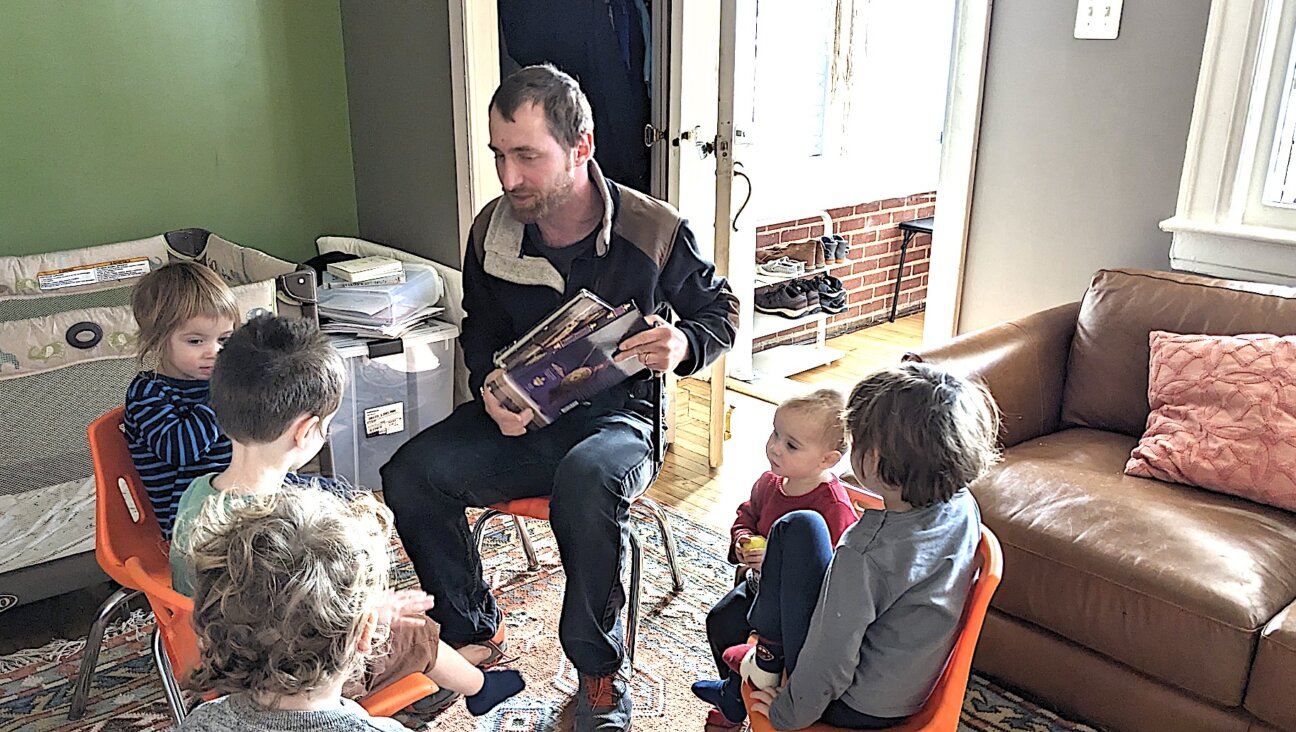Anne Frank, the App

Graphic by Angelie Zaslavsky
Earlier this month I found myself waiting in an hour-long line outside the Anne Frank House in Amsterdam. Antsy, I decided to download the free “Anne’s Amsterdam” app that was advertised outside the museum.
A quick download from the iTunes store and — Voila! —“Anne’s Amsterdam” was installed on my home screen. There was her smiling face, captured in black and white, her hair pinned back with a barrette — one of the most iconic faces to emerge from the Holocaust. And the app sits kitty-corner to my Facebook and Twitter icons on my iPhone.
Cognitive dissonance at its best, I think.
“Anne’s Amsterdam,” which came out in May, is a GPS driven application that takes its users to 30 different sites around the city. Among the sites are the city’s Jewish quarter and the location where Anne Frank attended Jewish school in 1941 — once Jews were banned from mainstream schools in Amsterdam.
Through the app I learned that my hotel was a mere 560 feet from Anne Frank’s Jewish school. Once I arrived there, an informational tab with photos popped up on my iPhone’s screen. I learned:
“Anne is well known as a funny girl who likes to be the centre of attention. Anne gets on well with all her teachers. Only her math teacher, Mr. Keesing, is cross with her for a while because she always talks in his lessons. Her punishment is to write an essay entitled ‘Quack, quack, quack said Mistress Chatterback.’”
I was impressed by the app’s many historical insights, photos and videos about its iconic subject. And yet, I found myself a bit unsettled by it.
Maybe because it turned Anne, a little girl forever perched on the cusp of womanhood, into just something else to digitally consume.
I suspect that like so many of Anne’s readers, I feel protective of her. It’s not just because I devoured her diary so many years ago. But it’s because she provides us deep access into her microcosm — and by doing so she inadvertently reminds us of how many other microcosms were devastated by World War II. Reading her diary allowed me to create a distinct image of her in my head. But the smartphone app takes that power away from me.
I am not a technological naysayer. I download apps often and find it funny when I see clusters of folks of all ages scroll through their devices, mid-stride, to write a text or post a Twitter update.
But must everything be “app-ified?” Can we not be left to our own devices (the non technological kind) to interact with history? This is not so much a complaint but a call — to all of us — to consider what it means when the Anne Frank “experience” is as easily downloadable as Angry Birds.
I get the fact that since millions of school children around the world read “Anne Frank: The Diary of a Young Girl” that the museum that protects her legacy wants to reach these school children where they’re at — on their phones. The museum likely sees it as another way to encourage conversations about difference, bigotry and war. But is an app, so easy to install and uninstall, and even easier to be distracted from, really the best way to do this?
According to an installation inside the museum, Anne Frank’s father, Otto, would not permit the museum to show a real-life reproduction of the furniture layout within the annex. No explanation was given.
I like to think that for a father whose daughter became so public — whose inner thoughts became the subject of lesson plans and classroom discussions worldwide — that one thing must remain private to him alone. I thought about that while considering the app, which further turns her into more of an icon than a young woman.
Days after visiting the Anne Frank House, I toured the D-Day beaches in Normandy, France. It wasn’t until hours after I left that I realized there was no mention of social media at the site, let alone an app.
Without this type of distraction, I was left to experience the D-Day landing beaches on my own, in my own world, with my own thoughts and emotions.
My fingers did not itch to scroll through my iPhone’s home screen. But I knew that if there was an app available I wouldn’t be able to control my fingers.
Without it, I was able to pay quiet homage to the past. It was solemn, peaceful and powerful.
















